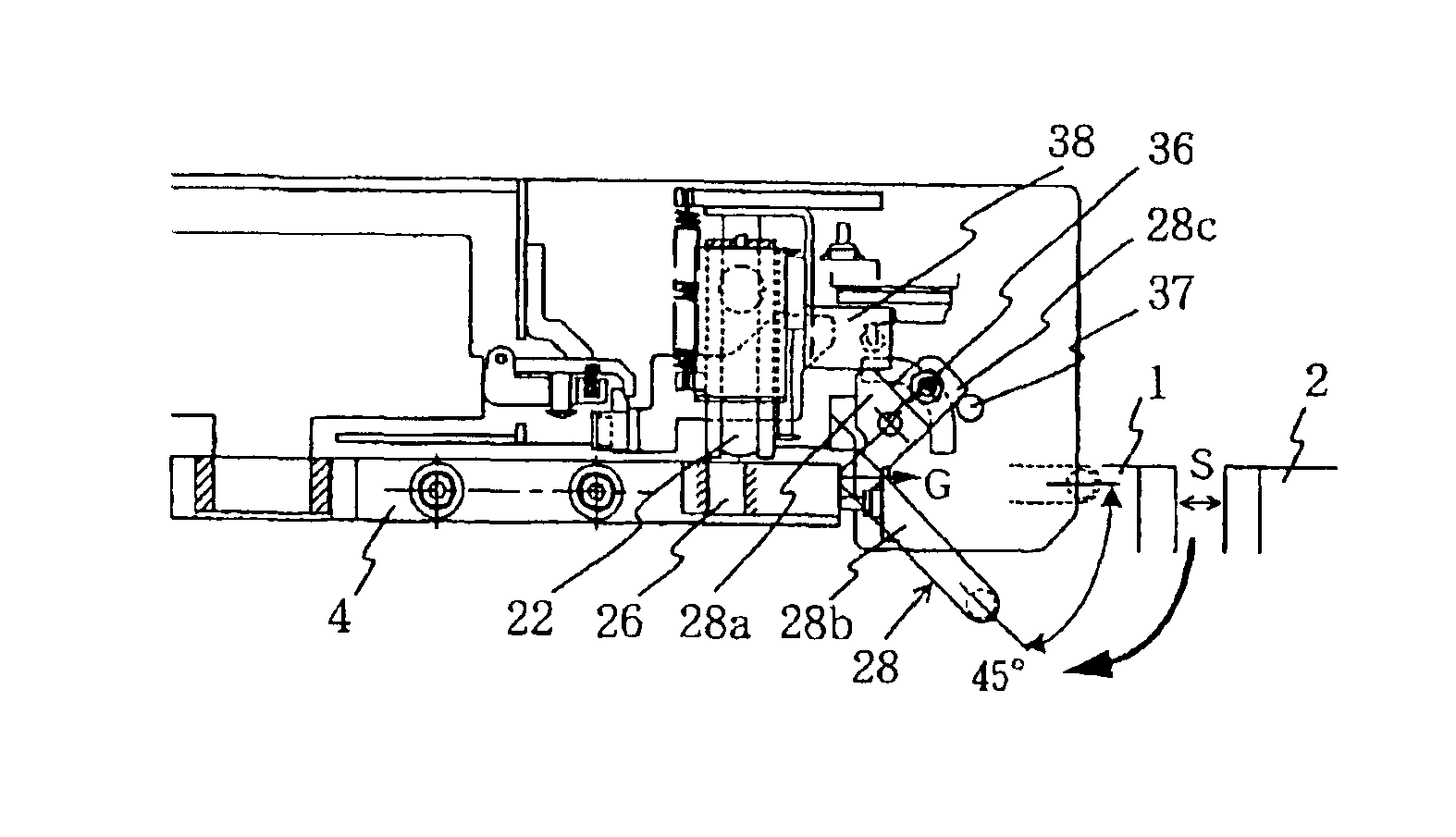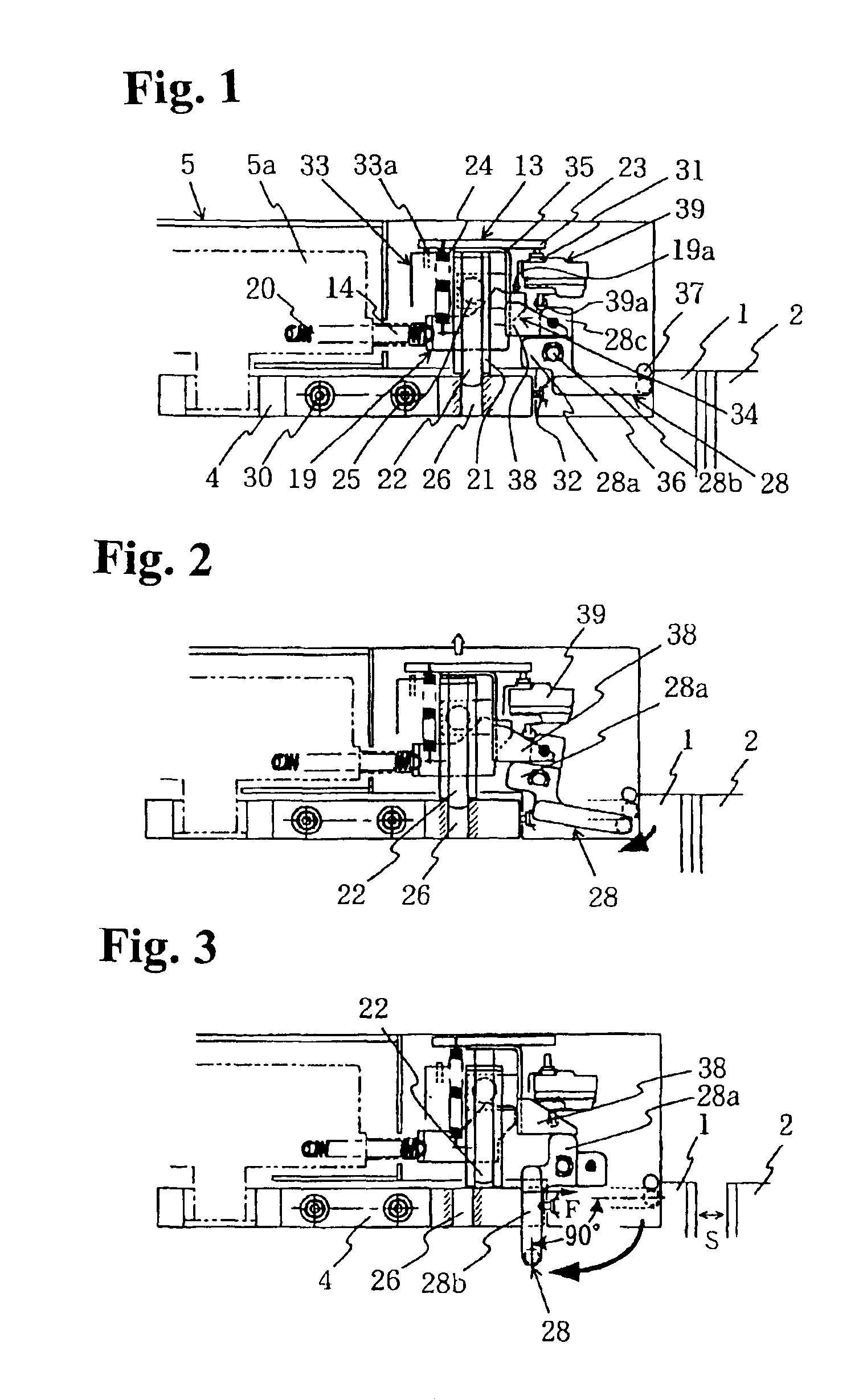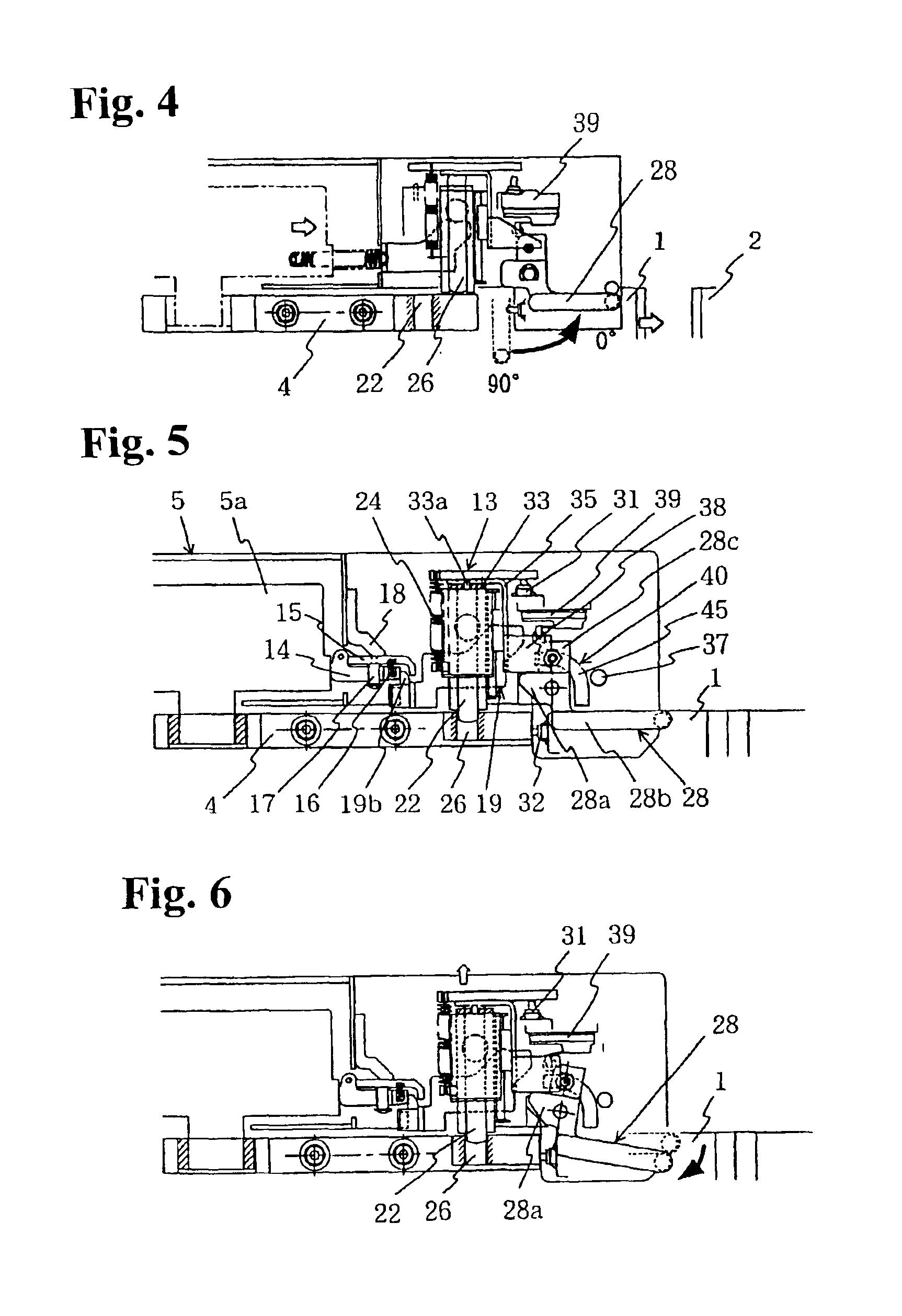Side sliding door apparatus for electric railcar
a technology for sliding doors and electric railcars, applied in the direction of locking applications, wing accessories, transportation and packaging, etc., can solve the problems of difficult to securely unlock the sliding doors, difficult to recognize, and tend to have a play
- Summary
- Abstract
- Description
- Claims
- Application Information
AI Technical Summary
Benefits of technology
Problems solved by technology
Method used
Image
Examples
first embodiment
[0040]Hereunder, embodiments of the invention will be explained with reference to the accompanying drawings. FIGS. 1 to 4 show a sliding door apparatus for an electric rail car according to the present invention. Elements and parts corresponding to those of the conventional door apparatus shown in FIGS. 10 to 13 are denoted by the same reference numerals.
[0041]FIG. 1 is a side view showing essential parts of the side sliding door apparatus in a locked state. In FIG. 1, as is the case with the prior art, two sliding doors 1, 2 are suspended via moving bodies 4 from a door rail (not shown) mounted horizontally along a side of an electric railcar. The two sliding doors move horizontally in reverse directions in FIG. 1 to open and close an entrance of the electric railcar.
[0042]A linear motor 5 as an actuator for opening and closing the sliding doors 1, 2, a locking mechanism for locking the closed sliding doors 1, 2, and an unlocking mechanism for unlocking the sliding doors 1, 2 are p...
second embodiment
[0055]Specifically, in the unlocked state in FIG. 3, the flat end face of the cam part 28a of the emergency handle 28 contacts the lower surface of the unlock arm 38. Also, the center of the contact surface between the cam part 28a and the unlock arm 38 in the horizontal direction in FIG. 3 is located just above an axis 36 that is a pivot of the emergency handle 28. Therefore, in order to rotate the emergency handle 28 counterclockwise, the unlock arm 38 must be pushed up against the force of the lock spring 24, thereby creating a large resistance. The handle 28b contacts the end face of the moving body 4 in parallel as well. Therefore, when the moving body 4 collides with the handle 28b, an application point of an impact force F is not constant. Assuming that the impact force F is applied to the handle 28b at a top end face of the moving body 4 as shown in FIG. 3, an arm length of the rotational moment around the axis 36 is small, thereby making it difficult to rotate the emergency...
PUM
 Login to View More
Login to View More Abstract
Description
Claims
Application Information
 Login to View More
Login to View More - R&D
- Intellectual Property
- Life Sciences
- Materials
- Tech Scout
- Unparalleled Data Quality
- Higher Quality Content
- 60% Fewer Hallucinations
Browse by: Latest US Patents, China's latest patents, Technical Efficacy Thesaurus, Application Domain, Technology Topic, Popular Technical Reports.
© 2025 PatSnap. All rights reserved.Legal|Privacy policy|Modern Slavery Act Transparency Statement|Sitemap|About US| Contact US: help@patsnap.com



